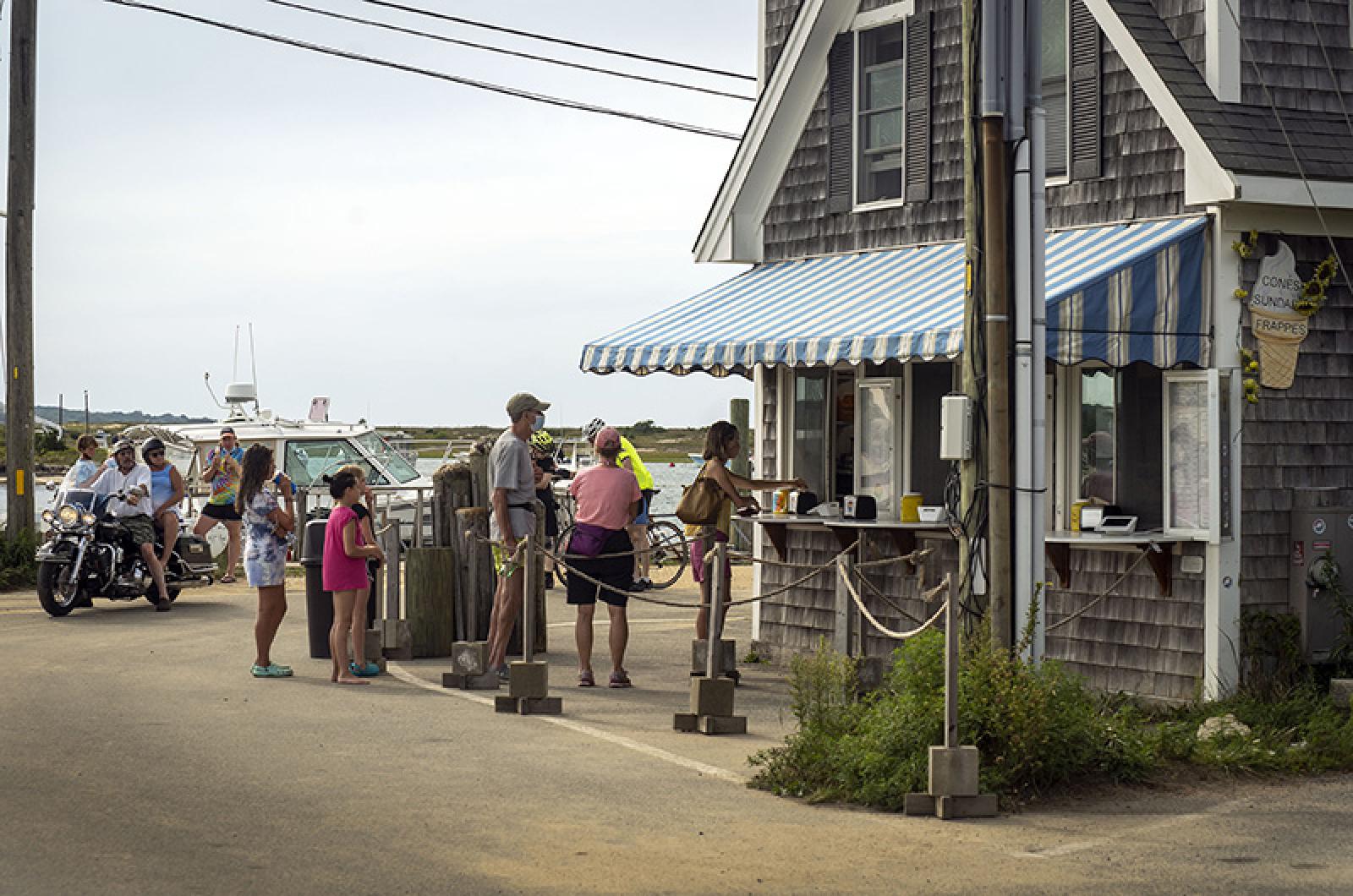The Island got a power wash this week from the remnants of Hurricane Ida as the calendar turned from August to September. In a day, a mild summer drought was over and with it the crowded sidewalks and heavy traffic that marked what was surely the busiest season ever.
Labor Day weekend is always bittersweet, signaling the end of beach days and backyard barbecues and heralding the return to school and the opening of the derby.
By many measures, it was a fortunate summer. Farmers had abundant crops, many businesses reported record receipts and ocean conditions favored fishermen, boaters and swimmers. Storms that devastated other parts of the region delivered only glancing blows to the Vineyard.
The sense of exuberance was tempered by the stealthy persistence of Covid-19, which began surging again in July. There were tragedies too. A fatal moped accident. The tragic drowning of a child. A shocking race-tinged incident at a summer camp.
Bad things will always happen. But the summer of 2021 brought to the fore many broader issues that the Island needs urgently to address to ensure its survival as a viable year-round community.
Housing
The housing crisis went from bad to intolerable this summer, fueled by a super-charged real estate market. Restaurants, hotels and other businesses faced critical staffing shortages, caused in part by a lack of worker housing. Business owners, flush with cash but exhausted from overwork, wonder aloud how long they can carry on.
Some are beginning to buy housing for their workers, and several affordable housing projects are under way, thanks to the efforts of the Island Housing Trust, the Martha’s Vineyard Land Bank and others.
But coordinated, creative solutions are needed to address the need for affordable housing without simply building more units, including a deeper look at the impact of short-term rentals.
Wastewater
With treatment plants in the three down-Island towns at or near capacity, and growing concern about the effects of nitrogen in coastal ponds, the Island must give the issue of wastewater the priority it deserves. Comprehensive wastewater management plans have begun, but they will require a broader understanding of the Island’s carrying capacity.
Climate Change
The effects of climate change are readily evident in our eroding shorelines. The Martha’s Vineyard Commission has put the issue at the top of its agenda, creating a task force that is working on practical ways to reduce greenhouse gas emissions as well as plans to deal with its inevitable effects. To find out how you can help, go to islandclimateaction.org.
Traffic
After more than a year of relative seclusion forced by the pandemic, people returned to the Island and its roads in droves this summer. Traffic backups are evident in a host of new places.
The fatal moped accident in August only emphasized what was already apparent, that the Island’s roads are not built for the volume of traffic they are now bearing. Adding traffic aids, such as adding a right-turn lane at the airport exit, will ease some pressure, but the long-term answer must involve some limit to the number of motor vehicles on the Island.
Racial Equity
According to the 2020 Census, non-white residents now make up 22 per cent of the Island population. As the Island has become more diverse, so has the need for active efforts to understand and address racial disparities in the community.
This summer, the Gazette introduced a podcast, Shed, in an effort to urge people to talk more openly about the effect of race in their lives. The Martha’s Vineyard Diversity Coalition is spearheading a variety of efforts to address racial inequity, and several troubling incidents this summer suggest the urgency of their efforts. For information, go to mvdiversitycoalition.org.
Growth
Most of the issues listed above are merely subsets of the overall challenge, which is growth.
According to the 2020 Census, the Island population has grown by 24 per cent since 2010, but that count was made before the pandemic ushered in another wave of immigration. Moreover, Census figures fail to capture the burgeoning seasonal population.
Growth is easily seen if not measured by the sight and sound of private jets, by the inability to get a ferry reservation midweek, by the lines at the Farmers’ Market and jammed parking lots at Cronig’s and Stop & Shop.
There are ways to limit and direct our growth, but they involve hard choices. It is not too late to engage in that conversation.







Comments
Comment policy »